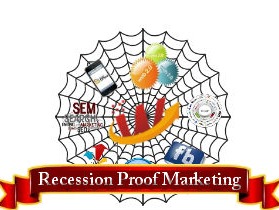
Understanding the Mascot Phenomenon
When you think of a brand mascot, you might picture a goofy character on a cereal box or a friendly animal representing a company. But mascots do more than just entertain; they create emotional connections with customers and enhance brand recognition. The resurgence of brand mascots reflects a trend where companies look for innovative ways to engage their audience amidst fierce competition.
Why Brands Are Investing in Mascots
Recent studies show that visual representations, such as mascots, are far easier to remember than textual messages. This highlights why businesses crave mascots now more than ever—the desire to be memorable. According to a 2025 study, companies utilizing mascots saw increased engagement rates compared to traditional marketing methods. For instance, McDonald’s campaign featuring Grimace not only generated buzz on social media but also contributed to an impressive rise in their sales. This delicious blend of fun and marketing success emphasizes the potential benefits of having a mascot.
The Emotional Connection of a Mascot
Emotional engagement is crucial in today’s marketing landscape, and mascots can fulfill this need exceptionally well. Customers often form attachments to mascots, seeing them as relatable and friendly figures. Chelsea Gladden, CEO of Everything Branding, notes that mascots can breathe personality into a brand. For example, Chowly's mascot, Platty the Platypus, embodies traits that resonate with their audience, reflecting the adaptability and resourcefulness needed in the restaurant industry.
Case Study: The Impact of Platty the Platypus
Platty isn’t just an amusing character; he serves as a symbol of Chowly’s innovative approach. His emergence came from a collaborative effort within the company, where the team sought to unify their brand’s identity. By embodying profound attributes like resilience and adaptability, Platty has become a beloved figure, featured prominently in marketing campaigns and social media posts that generate strong engagement.
Mashtags: A Unique Collaboration Strategy
Brands are also teaming up for quirky mascot collaborations that capture attention. These partnerships can produce viral content, as seen with various mascots taking part in humorous campaigns. These fun interactions can offer relevancy while making brands more relatable, positioning them favorably within consumers' minds.
Potential Pitfalls and Considerations
While mascots can enhance a brand's identity, they're not a panacea for all marketing challenges. Sterling Douglass from Chowly cautions that a mascot must add value without becoming just gimmicky. Balancing fun with professionalism is essential, especially in B2B sectors. Research and strategy crafting are crucial before introducing a mascot to ensure it aligns with brand values and resonates with the target market.
Taking the Plunge: Key Steps for Mascot Implementation
For brands considering a mascot, the journey begins with research. Determining how a mascot can align with your brand’s core values and audience is paramount. A mascot should enhance and not distract from your marketing strategy. Collaborate extensively across departments to ensure everyone aligns on the approach and messaging.
Conclusion: Consider Your Brand’s Unique Story
As businesses continue to explore innovative ways to connect with their customers, incorporating a mascot can be a unique approach. They can be more than just a marketing gimmick; if done right, mascots can reinforce brand identity and enhance emotional connections. As you consider boosting your brand’s presence, think about the story and personality you want to convey. Now might be the right time to find or create a mascot that embodies your brand’s essence, attracting attention and fostering engagement.
 Add Row
Add Row  Add
Add 




Write A Comment